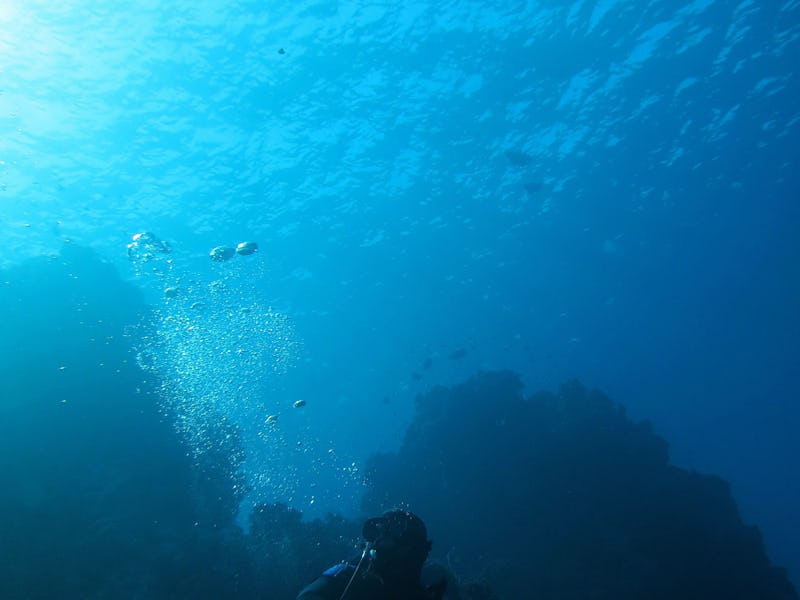2,000-Year-Old Water Is Locked in the Ocean's 'Shadow Zone, Say Scientists
This ancient layer hasn't moved for centuries.

Thousands of feet below the crashing surface of the North Pacific ocean, there’s a dark place where the water stands still. Scientists call it the Shadow Zone, and they’re not just being dramatic. In a recent Nature article, an Australian team of researchers point out that this lightless region of the abyssal ocean has trapped the same water for 2,000 years.
The reason, they report in their paper, can be found even deeper in the sea.
For a long time, scientists had been aware of the existence of the ancient water, but it was never clear why and how it managed to stay still for so long while the ocean above it rolls around so violently.
“Carbon-14 dating had already told us the most ancient water lies in the deep North Pacific,” said lead author and University of New South Wales oceanographer, Casimir de Lavergne, Ph.D., in a statement. “But until now we had struggled to understand why the very oldest waters huddle around the depth of 2 km.”
NASA's snapshot of ocean currents suggests water is always moving, but things are different below the surface.
They realize now, after an analysis of the ocean topography in that area, that the Shadow Zone’s specific depth and location are determined by the slopes and crags of the sea floor below it. According to the scientists, the Shadow Zone is a roughly rectangular patch of especially deep ocean stretching 3,700 miles from east to west and 1,200 miles north to south — making its surface area slightly larger than Europe’s — and the floor beneath it is especially rough.
This uneven floor, coupled with the way that shallower wind-driven currents running above the Shadow Zone move, has sandwiched the ancient water in its stratified position for at least 1,500 years, the researchers write. The shape of the floor prevents water at the very bottom of the sea from rising any further than 1.5 miles below the surface, effectively creating another watery floor. All the water above that layer is largely undisturbed — it’s far enough from the geothermal heat vents that promote mixing — leading to the eerily still Shadow Zone.
The water above and below the Shadow Zone moves laterally -- just not vertically.
It isn’t just water that’s in the Shadow Zone, the researchers point out, noting that the trapped molecules could have major effects on the ocean and even global climate when it eventually does escape.
“When this isolated shadow zone traps millennia old ocean water it also traps nutrients and carbon which have a direct impact on the capacity of the ocean to modify climate over centennial time scales,” read a statement from Stockholm University co-author Fabien Roquet, Ph.D.
If you liked this article, check out this video about underwater drones for exploring ocean life.